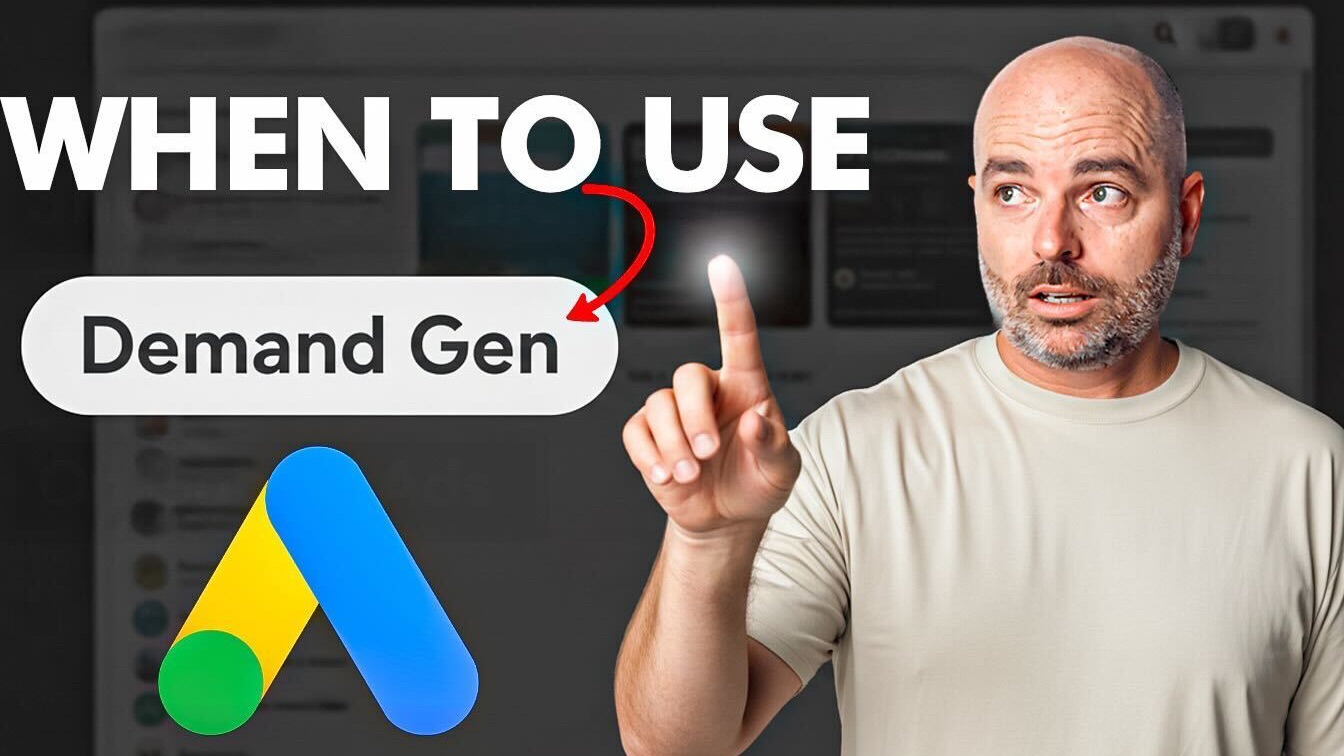
The Biggest Mistakes I see with Demand Gen Campaigns
Nov 24, 2025 Demand Gen is one of the most misunderstood and misused campaign types inside Google Ads.
Every week inside DDA we audit accounts that have Demand Gen campaigns running, and almost every time we see the exact same mistakes repeated.
These are the five biggest mistakes businesses make with Demand Gen — and how to avoid them.
Let’s start with the biggest one.
1. Using Too Small of a Budget
This is by far the most common issue.
An extreme example was an account we reviewed last week spending $10 per day on a Demand Gen campaign targeting the entire USA.
The USA has more than 250 million users.
Ten dollars a day won’t even scratch the surface. You will never get enough reach, frequency, or volume for the campaign to learn — let alone perform.
Google’s own documentation recommends:
-
$100 per day, or
-
20× your Target CPA
Now, there is nuance here. Smaller geographic regions with tight audiences can sometimes work with $30/day. We’ve seen it. But for most advertisers, Demand Gen needs volume to be effective.
This is why Demand Gen should usually be treated as a secondary campaign — something you activate after you’ve already built strong performance through:
-
Search
-
Shopping (if eCommerce)
-
Performance Max
2. Using Demand Gen Before It’s Required
This is closely linked to mistake #1.
Businesses jump into Demand Gen too early, without a clear reason for using it. But Demand Gen is not a “starter” campaign — it is a supporting campaign.
Demand Gen only works when:
-
You already have strong high-intent traffic working
-
You have a proven offer
-
You have validated audiences
-
You have strong search and shopping structure
-
You have the right creatives (which most accounts don’t)
The highest ROI always comes from high-intent keywords first.
Most Google Ads accounts have huge wins available just by fixing their:
-
Search structure
-
Shopping structure
-
PMAX structure
…long before they need to touch Demand Gen.
If you want help deciding when to use Demand Gen, I recorded a video that breaks down all the situations. Stay until the end of this video and I’ll link it for you.
👉How to Set Up a High-Performing Google Demand Gen Campaign in 2025
3. Using Optimised Targeting (at the Wrong Time)
This comes down to correct setup.
Optimised targeting automatically expands your audience beyond what you manually selected.
Google describes it as:
“uses machine learning to automatically find high-potential audiences based on your goals and initial signals.”
Sounds great.
But it can absolutely ruin your segmentation if used incorrectly.
Turn Optimised Targeting OFF if you are using Demand Gen to target:
-
Remarketing audiences
-
Cart abandoners
-
Non-converters
-
Highly specific demographics
-
Manually-segmented audience groups
Optimised targeting should only be used when you want broader, colder reach — not when you are trying to protect high-value segments.
4. Reading the Wrong Data
This one is critical.
Demand Gen results often do not show up accurately inside the Google Ads interface. In fact, the platform will often report the campaign as unprofitable — when in reality it is driving significant off-platform performance.
Two quick examples:
Example: Geo-Lift Experiment
-
Budget: $100/day on Demand Gen
-
Google Ads reported: 2 conversions
-
Real-world sales increased from 7.1/day → 11/day
That is an uplift of 4 extra sales per day.
Based on the brand’s real average CPA, this meant the true blended CPO was $25–$33 — far better than what Google reported.
Demand Gen works, but you cannot measure its value inside Google Ads alone.
You must measure lift, blended CPA, and whole-account performance.
5. Not Giving Demand Gen Enough Time
Demand Gen targets colder audiences by design.
This means:
-
Longer learning phases
-
Longer acquisition windows
-
More top-of-funnel influence
-
More indirect conversions
Because of this, we run Demand Gen for a minimum of 3 months before making any scaling decisions.
We evaluate:
-
Total blended performance
-
CPC changes
-
Conversion rate changes
-
Increases in brand search volume
-
Overall cost per acquisition
-
Lift-based outcomes
Often Demand Gen helps reduce CPCs across the entire account, improves retargeting pools, and increases conversion rates — even if the campaign itself doesn’t “look” profitable inside Google Ads.
Takeaway
Demand Gen can be extremely effective — but only when used correctly.
The biggest mistakes are:
-
Budgets that are too small
-
Using Demand Gen too early
-
Wrong targeting settings
-
Reading the wrong data
-
Not giving campaigns enough time
If you avoid these pitfalls, Demand Gen can significantly strengthen your funnel, help you scale, and support both short-term and long-term growth.

